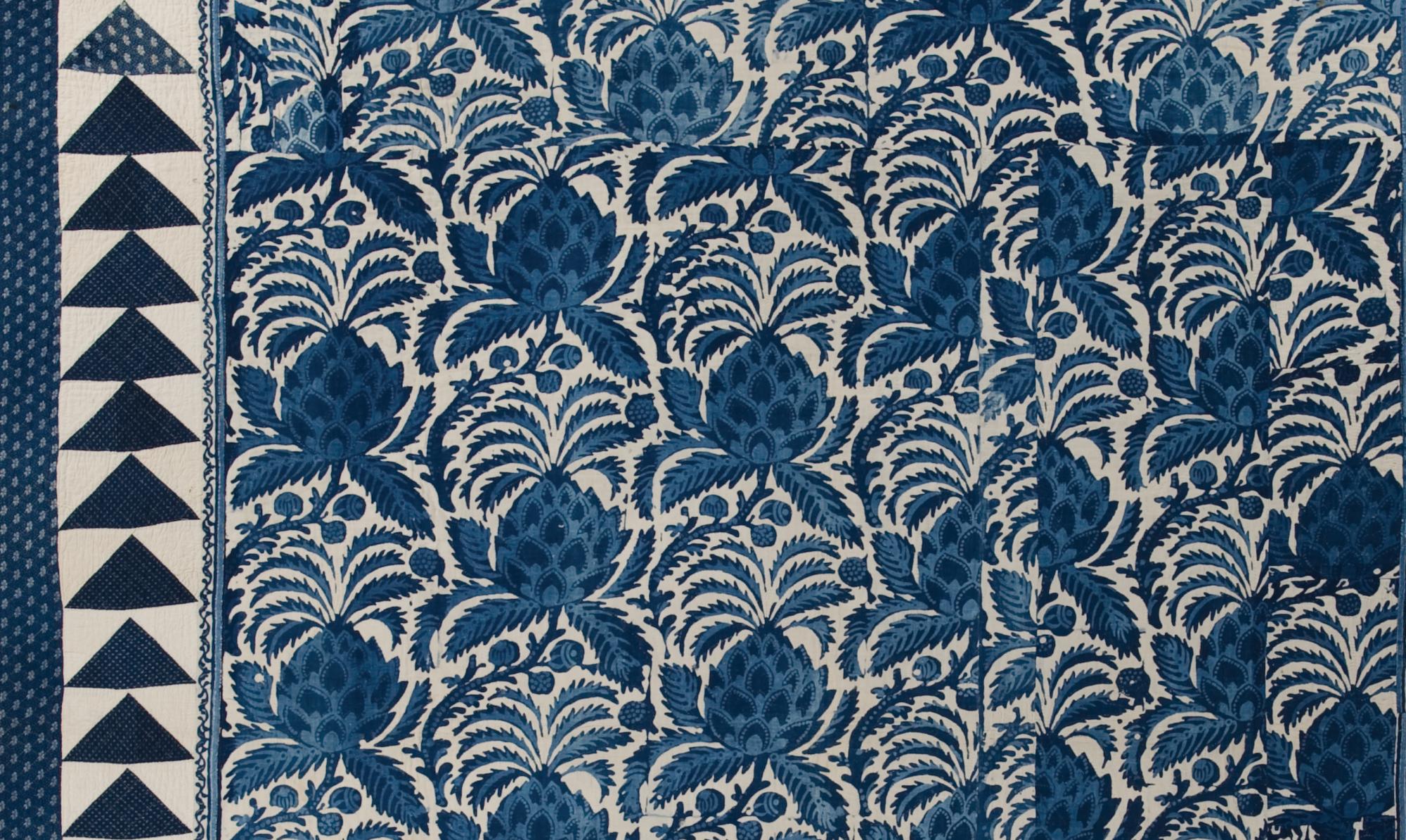
Indigo Gives America the Blues
Sept 7, 2012-June 2, 2013

Derived from several different plants in the indigofera family, indigo dye produces a multitude of colorfast blues, from pale sky blue to deep midnight blue. Its range of long-lasting colors made it wildly popular and highly valued when it was first imported from India to Europe in the late 1400s, resulting in the nickname “Blue Gold.”
Antique American textiles of all kinds bear the mark of indigo.
Fabrics for clothing, interior furnishings and bedding all were dyed or printed with indigo. But as you look through this online exhibition, you will see that quilts, in particular, are an ideal source for appreciating the ways in which Indigo Gives America the Blues.